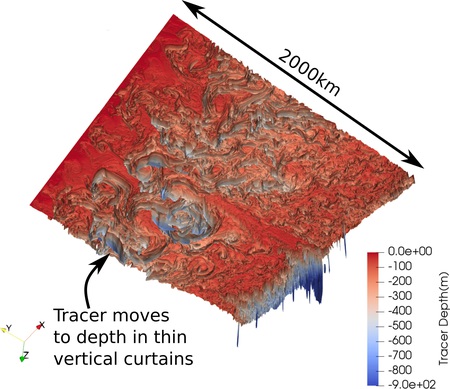Modeling Ocean Uptake in an idealised Southern Ocean
Dhruv Balwada and Shafer Smith at CAOS, in collaboration with Ryan Abernathy at Columbia University, have investigated the role of eddies and fronts in tracer (eg. CO2) uptake using an idealized model of the Southern Ocean. The model resolution is varied as a means to include or omit turbulent processes at various scales. The study finds that the submesoscale‐permitting simulations flux far more tracer downward than the lower‐resolution simulations. They also find that inertia‐gravity waves, which are ubiquitous in the ocean and are generally associated with very strong vertical velocities, had little impact on the tracer uptake. This work provides guidance and potential paths forward for improving fidelity of current generation climate simulations.



